

| Sr. No. | Products | Remark |
|---|---|---|
| 1 | 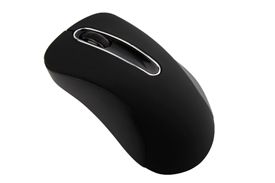 Wireless Mouse EN 300 328 |
To obtain Wireless Planning & Coordination (WPC) approval for a wireless mouse, you will need to follow the guidelines and procedures set by the WPC, which is a regulatory body responsible for managing radio frequency spectrum in India. First, you need to determine the appropriate category for your wireless mouse under the WPC regulations. The WPC has different categories for radio frequency devices, and your wireless mouse will likely fall under the "low power device" category. Next, you will need to obtain a Type Approval for your wireless mouse from the WPC. This requires submitting an application and required documents to the WPC, including a technical description of the device, test reports, and a copy of the user manual. Once your application is approved, you will need to obtain a frequency allocation from the WPC. This ensures that your device operates on an assigned frequency that does not interfere with other wireless devices. It's important to note that WPC approval is mandatory for all wireless devices that operate in India. Failure to obtain WPC approval can result in fines or legal penalties. |
| 2 | 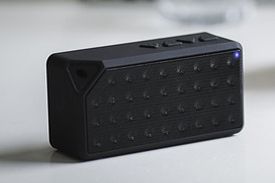 Wireless Speakers EN 300 328 |
To obtain Wireless Planning & Coordination (WPC) approval for wireless speakers, you will need to follow the guidelines and procedures set by the WPC, which is a regulatory body responsible for managing radio frequency spectrum in India. First, you need to determine the appropriate category for your wireless speakers under the WPC regulations. The WPC has different categories for radio frequency devices, and your wireless speakers will likely fall under the "low power device" category. Next, you will need to obtain a Type Approval for your wireless speakers from the WPC. This requires submitting an application and required documents to the WPC, including a technical description of the device, test reports, and a copy of the user manual. Once your application is approved, you will need to obtain a frequency allocation from the WPC. This ensures that your device operates on an assigned frequency that does not interfere with other wireless devices. |
| 3 | 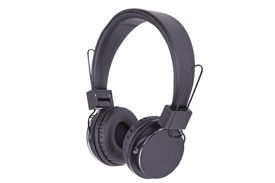 Bluetooth Headphones EN 300 328 |
To obtain Wireless Planning & Coordination (WPC) approval for Bluetooth headphones, you will need to follow the guidelines and procedures set by the WPC, which is a regulatory body responsible for managing radio frequency spectrum in India. First, you need to determine the appropriate category for your Bluetooth headphones under the WPC regulations. The WPC has different categories for radio frequency devices, and your Bluetooth headphones will likely fall under the "low power device" category. Next, you will need to obtain a Type Approval for your Bluetooth headphones from the WPC. This requires submitting an application and required documents to the WPC, including a technical description of the device, test reports, and a copy of the user manual. Once your application is approved, you will need to obtain a frequency allocation from the WPC. This ensures that your device operates on an assigned frequency that does not interfere with other wireless devices. |
| 4 |  WiFi Smart Watch EN 300 328 |
To obtain Wireless Planning & Coordination (WPC) approval for a WiFi Smart Watch, you will need to ensure that your device complies with the WPC's standards for wireless communication. As the device uses radio frequency (RF) signals to communicate wirelessly, you will need to apply for WPC Type Approval. This requires submitting an application and required documents to the WPC, including a technical description of the device, test reports, and a copy of the user manual. The WPC has different categories for radio frequency devices, and your WiFi Smart Watch will likely fall under the "low power device" category. Once your application is approved, you will need to obtain a frequency allocation from the WPC. This ensures that your device operates on an assigned frequency that does not interfere with other wireless devices. |
| 5 |  Wireless Pendrive EN 300 328 |
To obtain Wireless Planning & Coordination (WPC) approval for a wireless pendrive, you will need to ensure that your device complies with the WPC's standards for wireless communication. As the device uses radio frequency (RF) signals to communicate wirelessly, you will need to apply for WPC Type Approval. This requires submitting an application and required documents to the WPC, including a technical description of the device, test reports, and a copy of the user manual. The WPC has different categories for radio frequency devices, and your wireless pendrive will likely fall under the "low power device" category. Once your application is approved, you will need to obtain a frequency allocation from the WPC. This ensures that your device operates on an assigned frequency that does not interfere with other wireless devices. It is important to note that WPC approval is mandatory for all wireless devices that operate in India. Failure to obtain WPC approval can result in fines or legal penalties. Therefore, it is important to ensure that your device complies with the WPC regulations and undergoes the necessary testing and approval process before you begin marketing or selling your product in India. |
| 6 | 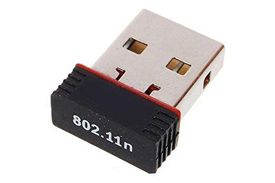 Wireless Nano USB EN 300 328 |
To obtain Wireless Planning & Coordination (WPC) approval for a wireless nano USB, you will need to ensure that your device complies with the WPC's standards for wireless communication. As the device uses radio frequency (RF) signals to communicate wirelessly, you will need to apply for WPC Type Approval. This requires submitting an application and required documents to the WPC, including a technical description of the device, test reports, and a copy of the user manual. The WPC has different categories for radio frequency devices, and your wireless nano USB will likely fall under the "low power device" category. Once your application is approved, you will need to obtain a frequency allocation from the WPC. This ensures that your device operates on an assigned frequency that does not interfere with other wireless devices. It is important to note that WPC approval is mandatory for all wireless devices that operate in India. Failure to obtain WPC approval can result in fines or legal penalties. Therefore, it is important to ensure that your device complies with the WPC regulations and undergoes the necessary testing and approval process before you begin marketing or selling your product in India. |
| 7 |  Wireless Keyboard EN 300 328 |
To obtain Wireless Planning & Coordination (WPC) approval for a wireless keyboard, you will need to ensure that your device complies with the WPC's standards for wireless communication. As the device uses radio frequency (RF) signals to communicate wirelessly, you will need to apply for WPC Type Approval. This requires submitting an application and required documents to the WPC, including a technical description of the device, test reports, and a copy of the user manual. The WPC has different categories for radio frequency devices, and your wireless keyboard will likely fall under the "low power device" category. Once your application is approved, you will need to obtain a frequency allocation from the WPC. This ensures that your device operates on an assigned frequency that does not interfere with other wireless devices. It is important to note that WPC approval is mandatory for all wireless devices that operate in India. Failure to obtain WPC approval can result in fines or legal penalties. Therefore, it is important to ensure that your device complies with the WPC regulations and undergoes the necessary testing and approval process before you begin marketing or selling your product in India. |
| 8 | 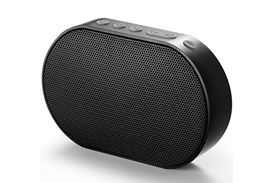 Hotspot Devices EN 300 328 |
To obtain Wireless Planning & Coordination (WPC) approval for hotspot devices, you will need to ensure that your device complies with the WPC's standards for wireless communication. Hotspot devices typically operate using cellular networks, and therefore require approval from the Department of Telecommunications (DoT) as well as the WPC in India. You will need to submit an application and required documents to the WPC and the DoT, including a technical description of the device, test reports, and a copy of the user manual. The WPC has different categories for radio frequency devices, and your hotspot device will likely fall under the "high power device" category. Once your application is approved, you will need to obtain a frequency allocation from the WPC. This ensures that your device operates on an assigned frequency that does not interfere with other wireless devices. In addition to WPC approval, you will need to obtain type approval from the DoT, which regulates the use of telecommunications equipment in India. This process involves submitting an application to the Wireless Planning and Coordination Wing (WPC), which is a branch of the DoT. It is important to note that WPC and DoT approval is mandatory for all hotspot devices that operate in India. Failure to obtain these approvals can result in fines or legal penalties. Therefore, it is important to ensure that your device complies with the WPC and DoT regulations and undergoes the necessary testing and approval process before you begin marketing or selling your product in India. |
| 9 | 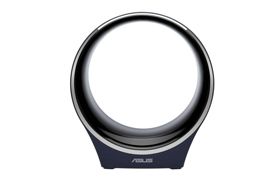 Smart Home Gateway EN 300 328 |
To obtain Wireless Planning & Coordination (WPC) approval for a Smart Home Gateway, you would need to follow the WPC's guidelines for wireless communication devices. WPC approval ensures that your device meets the technical specifications and regulatory requirements for wireless communication in India. Here are some steps you can take to obtain WPC approval for your Smart Home Gateway: Determine the frequency band(s) your device will use for wireless communication. The WPC regulates the use of radio frequency spectrum in India and assigns frequency bands to different types of wireless devices. Ensure that your device complies with the technical specifications and safety requirements set by the WPC for wireless communication devices. This may involve testing the device's electromagnetic compatibility, power output, and other performance parameters. Apply for WPC approval by filling out an application form and providing the required documentation, such as test reports, user manuals, and circuit diagrams. Pay the required fee for WPC approval and wait for the approval process to be completed. The process may take several weeks or months, depending on the complexity of the device and the workload of the WPC. Once your Smart Home Gateway has been approved by the WPC, you can use it for wireless communication in India and market it as WPC-approved. You will need to comply with the ongoing regulatory requirements for wireless communication devices, such as obtaining renewal of the approval certificate and reporting any changes in the device's specifications or usage. |
| 10 | 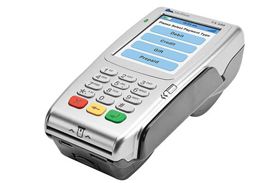 Wireless Terminal EN 300 328 |
Wireless Planning & Coordination (WPC) is a regulatory body in India that is responsible for the approval and management of wireless communication devices and equipment. If you want to use a wireless terminal in India, you need to obtain approval from the WPC. To obtain WPC approval for a wireless terminal, you need to follow these steps: Submit an application: You need to submit an application to the WPC for approval. The application should include details about the wireless terminal, such as the frequency band, power output, and mode of operation. Testing: Once the application is submitted, the WPC will conduct tests on the wireless terminal to ensure that it meets the required technical standards and regulations. This testing is usually conducted by an authorized testing agency. Approval: If the wireless terminal meets all the required standards and regulations, the WPC will issue an approval certificate. |
| 11 |  Wireless POS Terminal EN 300 328 |
If you want to use a Wireless Point of Sale (POS) Terminal in India, you need to obtain approval from the Wireless Planning & Coordination (WPC) department. Here are the steps to follow: Application Submission: The first step is to submit an application for the WPC approval of your Wireless POS Terminal. You need to provide all the necessary details about the device, such as the frequency band, power output, and mode of operation. Testing: Once you submit the application, the WPC will conduct tests on your Wireless POS Terminal to ensure that it complies with the technical standards and regulations. The testing is usually conducted by an authorized testing agency. Approval Certificate: If your Wireless POS Terminal passes the required standards and regulations, the WPC will issue an approval certificate. |
| 12 |  WiFi Router EN 300 328 |
If you want to use a WiFi Router in India, you need to obtain approval from the Wireless Planning & Coordination (WPC) department. Here are the steps to follow: Application Submission: The first step is to submit an application for the WPC approval of your WiFi Router. You need to provide all the necessary details about the device, such as the frequency band, power output, and mode of operation. Testing: Once you submit the application, the WPC will conduct tests on your WiFi Router to ensure that it complies with the technical standards and regulations. The testing is usually conducted by an authorized testing agency. Approval Certificate: If your WiFi Router passes the required standards and regulations, the WPC will issue an approval certificate. It's important to note that the approval process may take several weeks or months, depending on the complexity of the device and the workload of the WPC. Also, you may need to obtain additional approvals or licenses from other regulatory bodies, such as the Department of Telecommunications (DoT), depending on the specific application of the WiFi Router. |
| 13 | 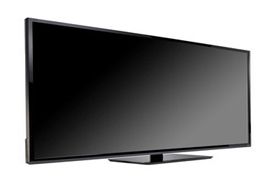 Smart TV EN 300 328 |
If you want to use a Smart TV in India, you do not need to obtain approval from the Wireless Planning & Coordination (WPC) department. Smart TVs do not fall under the category of wireless communication devices or equipment that require WPC approval. However, it's important to note that if your Smart TV has wireless capabilities, such as WiFi or Bluetooth connectivity, you may need to comply with certain regulations and standards set by other regulatory bodies, such as the Department of Telecommunications (DoT) or the Ministry of Electronics and Information Technology (MeitY). For example, if your Smart TV has WiFi capabilities, you may need to comply with the DoT's guidelines for WiFi access points and hotspot devices. If your Smart TV has Bluetooth capabilities, you may need to comply with the MeitY's guidelines for Bluetooth devices. Make sure to check the specific regulations and standards that apply to your Smart TV and comply with them to avoid any legal or financial issues. |